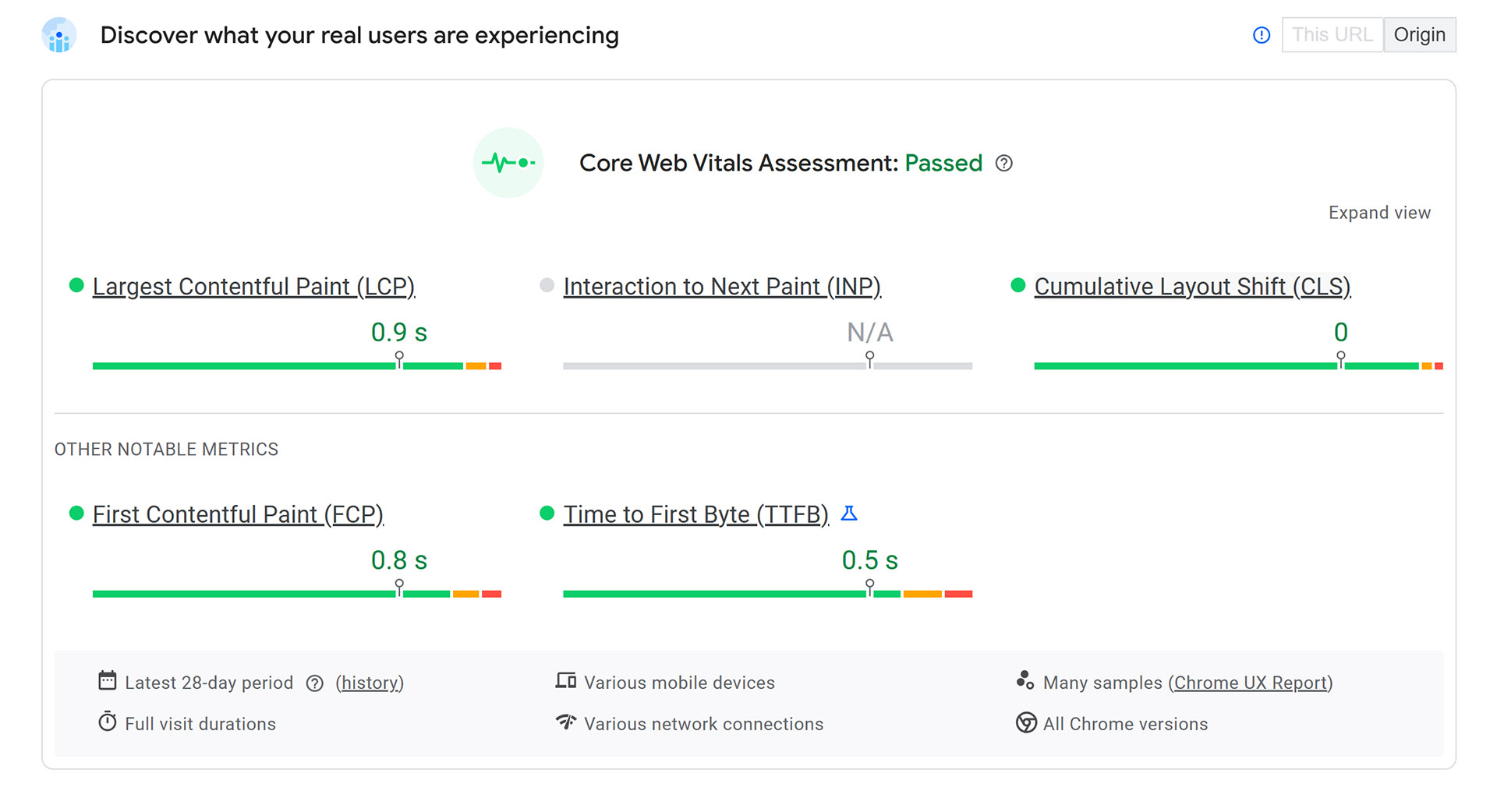WHY WEBSITE PERFORMANCE MATTERS: THE HIDDEN FACTORS BEHIND SEO AND SUCCESSFUL CONVERSION
When people think about building a successful website, they often focus on the aesthetics, functions and content. But what often goes unnoticed, and yet has one of the biggest impacts, is website performance.
Your website’s speed and responsiveness are more than just technical bonuses, they are crucial in how search engines rank your website, how users interact with your content and whether or not visitors convert into clients/customers or leave for one of your competitors. The easiest way to put it, your website performance affects everything.
What is Website Performance really?
In general, website performance refers to how fast and efficiently your site loads, responds and renders across various devices and browsers. It’s measured by a number of metrics including:
- Page Load Time - How long it takes for a page to fully display its content.
- Time to First Byte (TTFB) - How quickly a server responds to the first request.
- Core Web Vitals - User-centric performance metrics used to measure real-world experience.
How do I measure these metrics?
To gauge website performance and understand ways to optimise it, it’s essential to be able to measure these metrics first. You can do this by looking further into the Core Web Vitals mentioned above or by taking a look at your Lighthouse Scores. These will be indicators of where your problem areas may reside.
Core Web Vitals were introduced by Google to highlight critical aspects of user experience. This includes loading performance, interactivity and visual stability. The key metrics here to pay attention to are:
- Your Largest Contentful Paint (LCP) - The time it takes for your largest visible element to fully render.
- Your First Input Delay (FID) - The time from when a visitor first interacts with a page to the time a browser processes the interaction.
- Your Cumulative Layout Shift (CLS) - The amount of unexpected layout shifts that occur on a website while it is loaded.
You can see these Core Web Vitals in action in the example below.
The other area to pay attention to are your Lighthouse scores. These are powered by Google Lighthouse, an automated tool for improving the quality of websites. Lighthouse measures your metrics, places them into an audit report and ranks them out of one hundred based on four key categories: Performance, Best Practice, Accessibility and SEO. This is your best way to understand your website's strengths and identify areas for improvement in regards to how well your website performs. Each category will list out its respective items that are or could possibly be presenting problem areas. You can see these scores presented in the example below.
Combined, these tools will help you understand the current overall experience users can expect and monitoring them can help contribute to better user satisfaction. Good discipline and professional execution in these metrics when designing or building a website ensures users can access and interact with your website without friction as intended, thus creating strong website performance by proxy. Friction is the enemy of conversions and directly affects the hidden factors that negatively impact your performance. We’ll discuss these next.
Hidden Factor 1
Faster Websites Mean Better User Experience
User experience is about how people feel when interacting with your website. It includes a person’s perception of utility, ease of use and efficiency. Poor user experience often causes sluggish loading, shifting content, or broken interaction and it quickly erodes trust and increases frustration. Speed performance is often rated as the number one factor when it comes to poor user experience.
There are a lot of things that can affect your speed. It can include the following:
- Slow servers from poor hosting choices
- A heavy-weight Content Management System (CMS)
- Bloated, cluttered or outdated code
- Excessive JavaScript or CSS
- Overindulgent use of third scripts and plugins
- Unoptimised imagery and media
- Caching inefficiencies
Your speed is the first impression of your user experience. Today’s users are impatient and expect websites to be lightning-fast, especially on mobile. This is backed up by Google’s statistics where they state that 53% of users will abandon a site if it takes longer than 3 seconds to load. This figure then rises as the load time increases. Sorting out your site speed will increase your performance by reducing bounce rates and encouraging further exploration, raising engagement by supporting longer visit sessions per visit, and improving accessibility for users with slower connections or older devices.
Hidden Factor 2
Google Rewards Speed
Since Google’s Core Web Vitals came into play, the way in which websites are ranking has changed. They are now a massive ranking factor and key player in your SEO success. It is no longer primarily focusing on meta descriptions, key words and creating relevant content. It’s now absolutely crucial that your performance is respected and paid attention to.
- Google will actively now reward you for keeping your Core Web Vitals and Lighthouse scores in check. You can expect the following benefits from Google’s practice:
- Websites that load quickly and smoothly without issues are prioritised in search results over those which do not.
- Google indexes mobile sites first, so slow performing mobile sites will diminish your rankings.
- A fast-loading site makes it easier for Google to crawl more pages and explore your content for better ranking.
The Bottom Line: Speed Drives Conversions
Your website performance isn’t just about pleasing search engines or creating visually engaging experiences. You can see from this article that speed plays a very big part in affecting all of the core areas of your website and your users. If it isn’t addressed it can push people to competitors faster, cause higher abandonment rates, deteriorate your trust and credibility and determine your user’s behaviour.
Your website performance is invisible when it’s working and is painfully obvious when it’s not. As expectations rise and Google tightens its ranking criteria, optimising your site's performance is one of the smartest investments you can make. If you’re one of the millions of people paying for SEO services and are possibly wondering why you’re not getting the results you expect, the likelihood is that you have performance issues that are affecting these two hidden factors.
If you’re looking to conduct your own audit and are looking for support with your website performance, feel free to reach out to me on my contact page and we can take you into your problem areas together. If you’re ready to proceed alone, remember to focus on the fundamentals, measure regularly and always think from your user’s perspective. You should be making performance a priority, not an afterthought.


